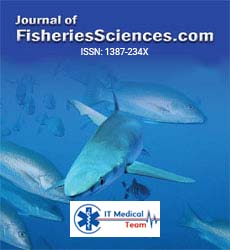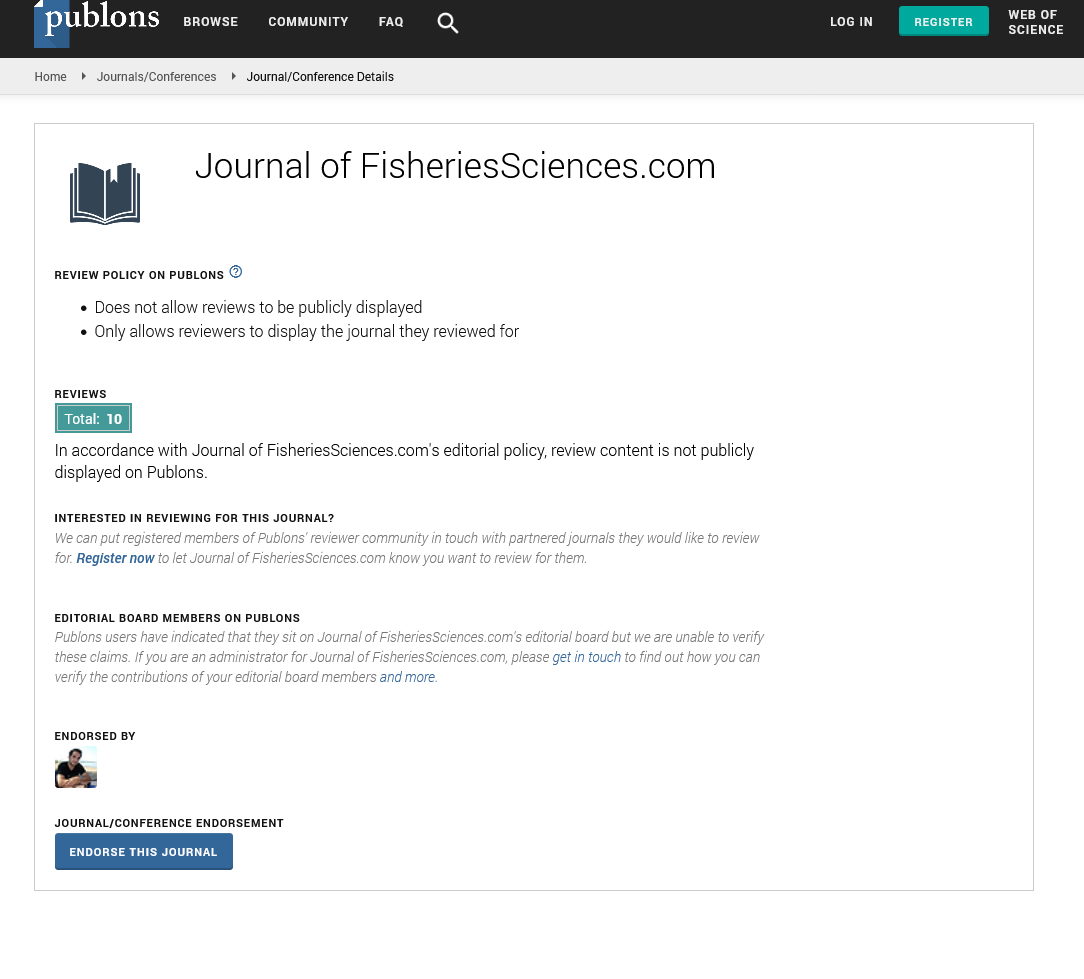Perspective - (2024) Volume 18, Issue 6
Understanding Aquatic Ecosystems: A Comprehensive Overview
Brandon Klein*
Department of Biology and Ecology of Fishes, University of AquaSciences, Boise, United States
*Correspondence:
Brandon Klein, Department of Biology and Ecology of Fishes, University of AquaSciences, Boise,
United States,
Email:
Received: 03-Dec-2024, Manuscript No. IPFS-24-15408;
Editor assigned: 06-Dec-2024, Pre QC No. IPFS-24-15408 (PQ);
Reviewed: 20-Dec-2024, QC No. IPFS-24-15408;
Revised: 23-Dec-2024, Manuscript No. IPFS-24-15408 (R);
Published:
31-Dec-2024
Introduction
Aquatic ecosystems, which encompass both marine and
freshwater environments, are vital to the health of our planet.
They include oceans, rivers, lakes, wetlands and estuaries, each
with its unique set of conditions, species and ecological
processes. These ecosystems play a crucial role in regulating
climate, supporting biodiversity and providing resources and
services that are essential for human survival. This article
explores the structure and function of aquatic ecosystems, their
significance and the challenges they face.
Description
Aquatic ecosystems are structured by physical, chemical and
biological factors.
Physical factors
Water depth and light penetration: In marine environments,
the depth of the water affects light penetration, which in turn
influences primary production. Shallow waters allow more light
to reach the seafloor, promoting the growth of submerged
aquatic vegetation.
Temperature and salinity: These factors vary between
freshwater and marine environments and influence species
distribution and metabolic rates. For instance, freshwater
ecosystems generally have a wider range of temperatures and
lower salinity levels compared to marine ecosystems.
Flow rate: In rivers and streams, the flow rate affects
sediment transport, nutrient distribution and habitat availability.
Fast-moving waters support species adapted to high-flow
conditions, while slower waters accommodate different species.
Chemical factors
Nutrient levels: Nutrients such as nitrogen and phosphorus
are crucial for primary production. Their availability can limit or
enhance the growth of phytoplankton and aquatic plants.
Oxygen levels: Dissolved oxygen is essential for the
respiration of aquatic organisms. Oxygen levels can fluctuate
based on temperature, water movement and organic matter
decomposition.
Biological factors
Trophic levels: Aquatic ecosystems have complex food webs
with primary producers (e.g., phytoplankton, aquatic plants) at the
base, followed by herbivores, carnivores and decomposers. Energy
is transferred through these trophic levels, shaping the
ecosystem's structure.
Species interactions: Predation, competition and symbiosis
are key interactions that influence species distribution and
abundance. For example, the presence of predators can control
the population sizes of prey species and affect the overall
community structure.
Significance of aquatic ecosystems
Biodiversity: Aquatic ecosystems are home to a vast array of
species, from microscopic plankton to large marine mammals.
Coral reefs, for instance, support one of the highest levels of
biodiversity among marine ecosystems. Wetlands serve as
critical habitats for many birds, amphibians and fish species.
Climate regulation: Oceans play a significant role in regulating
the earth's climate by absorbing and storing carbon dioxide.
They also influence weather patterns and help mitigate the
effects of climate change. Similarly, wetlands act as carbon sinks
and regulate local climate conditions.
Resources and services: Aquatic ecosystems provide essential
resources such as fish, shellfish and algae. Ecosystem
services like water purification, flood regulation and nutrient
cycling are critical for maintaining environmental health and
human well-being.
Economic value: Fisheries and aquaculture industries rely on
healthy aquatic ecosystems for their productivity. These
industries contribute significantly to global economies, providing
food security and livelihoods for millions of people. Additionally,
ecosystems like coral reefs and mangroves attract tourism,
generating economic benefits for coastal communities.
Challenges facing aquatic ecosystems
Pollution: Aquatic ecosystems are increasingly threatened by
pollution from various sources, including agricultural runoff,
industrial discharge and plastic waste. Nutrient pollution can lead to harmful algal blooms and hypoxia (low oxygen levels),
which can devastate aquatic life. Plastic pollution poses a
significant threat to marine species, as animals ingest or become
entangled in debris.
Climate change: Climate change impacts aquatic ecosystems
through rising temperatures, ocean acidification and altered
precipitation patterns. These changes can disrupt species
distributions, affect reproductive cycles and alter ecosystem
dynamics. For example, coral bleaching events, caused by
elevated sea temperatures, threaten the health of coral reef
ecosystems.
Overfishing: Overfishing depletes fish stocks and disrupts the
balance of aquatic ecosystems. Unsustainable fishing practices
can lead to the decline of target species, as well as bycatch of
non-target species, including endangered ones. This imbalance
can have cascading effects throughout the food web.
Habitat destruction: Human activities such as coastal
development, deforestation and dam construction lead to
habitat loss and degradation. Wetland drainage, mangrove
deforestation and river modification reduce habitat availability
for many aquatic species, impacting their survival and
reproduction.
Conclusion
Aquatic ecosystems are complex and dynamic systems that
play a fundamental role in maintaining environmental health and
supporting human well-being. Understanding their structure,
significance and the challenges they face is crucial for effective
conservation and management. By taking collective action to
protect and restore these vital ecosystems, we can ensure their
sustainability for future generations and preserve the invaluable
resources and services they provide.
Citation: Klein B (2024) Understanding Aquatic Ecosystems: A Comprehensive Overview. J Fish Sci. Vol.18 No.6






